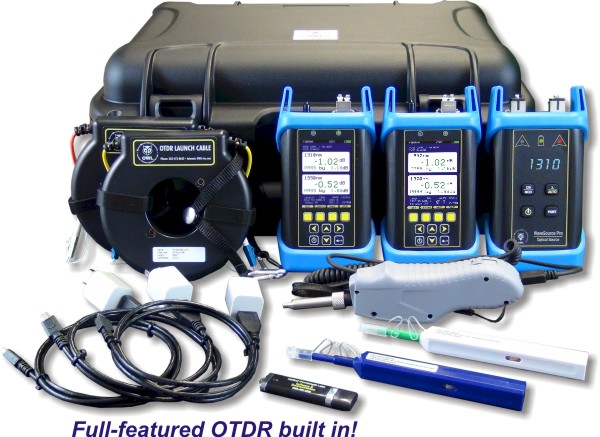Modern Robotic Vision Technologies for Optimized Industrial Operations
Why Optical Fibre Screening Tools Is Crucial for Network Upkeep
In the realm of network upkeep, the relevance of optical fiber screening equipment can not be overemphasized. By using tools such as Optical Time Domain Reflectometers and Optical Power Meters, network professionals can make sure conformity with industry criteria while proactively resolving possible disturbances.
Relevance of Routine Checking
In the realm of telecommunications, the value of normal screening of optical fiber can not be overemphasized. Optical fiber networks act as the backbone of modern interaction systems, assisting in high-speed data transmission over large ranges. Normal screening guarantees the honesty and integrity of these networks, detecting prospective problems before they escalate right into substantial issues.
Testing helps recognize mistakes, such as breaks or bends in the fiber, which can cause raised signal loss and jeopardized performance. Abnormalities in transmission can weaken customer experience, leading to slow information prices and solution disruptions. With systematic testing, network drivers can preserve optimal performance, ensuring very little downtime and optimizing service schedule.
It gives documented proof of network health, which is critical for audits and evaluations. In verdict, regular optical fiber testing is important for preserving the operational efficiency, safety and security, and longevity of telecommunications framework, ultimately making sure a seamless communication experience for users.
Key Types of Testing Equipment

Another essential gadget is the Optical Power Meter, used to determine the power levels of optical signals in the fibre. When coupled with a light, it enables the analysis of web link loss, making certain that the network runs within specified parameters.
In Addition, a Fibre Identifier is very useful for identifying details fibres in a multi-fibre wire without interfering with service. This tool aids in upkeep tasks by determining the right fibre for screening or fixing.
Finally, Aesthetic Fault Locators (VFL) are employed to find breaks and faults in fiber wires by releasing a noticeable light. Together, these testing tools create an important toolkit for preserving and repairing optical fiber networks, ensuring reputable efficiency and decreasing downtime.
Troubleshooting Common Issues
When troubleshooting usual original site concerns in optical fibre networks, service technicians often experience an array of troubles that can affect performance and connectivity. One prevalent issue is signal loss, which may come from variables such as improper splicing, bends in the fibre, or filthy adapters. Utilizing an Optical Time Domain Reflectometer (OTDR) allows professionals to identify the exact area of faults and evaluate the integrity of the fiber optic wire.
Another common problem is attenuation, which refers to the reduction of signal strength over distance. This can arise from extreme bends or incorrect setup methods. Routine testing with power meters and light sources can assist identify excessive attenuation and identify if the installation abides by industry standards.

Enhancing Network Performance
Resolving typical concerns such as signal loss and attenuation establishes the foundation for boosting network performance in optical fiber systems. By utilizing advanced optical fiber testing devices, network managers can determine and rectify faults that endanger signal stability. This aggressive method not just prevents degradation of service but also optimizes the overall efficiency of the network.
Regular testing allows for the detection of possible issues prior to they rise, guaranteeing marginal disruption to individuals (optical fibre diameter analyser). By gauging parameters such as insertion loss, return loss, and optical power degrees, professionals can obtain beneficial understandings into the health and wellness of the fiber network. This data-driven approach enables targeted upkeep approaches, facilitating quicker repair services and lowering downtime
Furthermore, preserving optimum efficiency levels is essential for supporting the raising demands of modern applications, such as high-def video clip streaming and cloud computing. Boosted network efficiency equates to improved customer experience, faster data transmission, and greater integrity.
Cost-Effectiveness of Maintenance
Purchasing optical fiber testing tools settles considerably in regards to maintenance costs. By utilizing innovative screening tools, network operators can proactively detect mistakes and issues within the fibre optic facilities. This early recognition minimizes the danger of devastating failings that might lead to comprehensive downtime and costly repair services.
Furthermore, the capacity to rapidly analyze the problem of fiber cable televisions enables for more efficient allocation of upkeep sources. Specialists can focus their initiatives on locations that call for instant focus, instead of conducting look at this now broad, time-consuming his response examinations that might not yield critical insights. This targeted technique not just reduces labour expenses yet also improves the general effectiveness of maintenance techniques.
In addition, routine testing with optical fiber devices enhances the life-span of the network facilities. By dealing with small problems before they rise, operators can prevent the considerable expenditures related to major fixings or substitutes. The long-term financial benefits of investing in these testing tools far exceed the preliminary expenses, placing organisations to keep optimum network efficiency while controlling expenditure. In summary, the cost-effectiveness of maintenance is considerably improved through the calculated usage of optical fibre testing devices, eventually resulting in a robust and trustworthy network.
Conclusion
In conclusion, optical fiber screening tools plays a crucial function in maintaining network integrity and efficiency. Normal testing is vital for very early fault detection and reliable troubleshooting, ultimately improving network dependability.